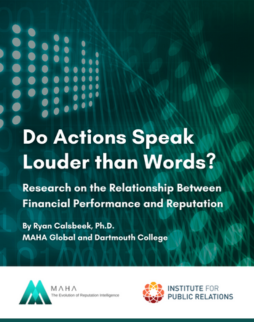
New Insights
In this section I will be posting some of the recent research findings in crisis communication. The shelf date will be sic months for the new materials. Eventually, many of the new insights will be added to the original Crisis Communication entry. The “New Insights” is divided into publications and papers.
Publications
A special issue of the Journal of Public Relations Research will be released soon. Here is an advanced look at the content. The special issue of the Journal of Public Relations Research on crisis communication creates an opportunity to share what we know and have learned with scholars, practitioners, and educators. This special issue addresses various interdisciplinary issues in crisis communication.
A strong theme found in the articles in the use of online media. Choi and Lin content analyzed online bulletin board posts about the Mattel product recall. Their results expand our understanding of emotion in a crisis. Their data found that the emotions of alert and anger had significant negative relationships to organizational reputation. Stephens and Malone content analyzed blogs and Websites as well as news stories and press releases. They found other stakeholder blogging about a crisis offered emotional support while technical translation was more the providence of Websites, news articles, and press releases. They also found technical translation was related to the presence of web links. Caldiero, Taylor, and Ungureanu content analyzed news releases posted on organizational web sites during a fraud/mismanagement crisis ad news stories about the crisis. They found the online new releases were used in media coverage of the crises.
The close relationship between risk and crisis communication emerges in this collection of articles. Heath, Lee, and Ni used surveys to examine how diversity of voices affects people’s preparedness for emergencies. Diverse voices were found to increase a sense of self, expert, and community preparedness. Avery and Kim content analyzed avian flu press releases to illuminate the purposes and nature of organizational response being constructed. Risk is used to inform what should and should not be included in press releases related to public health emergencies.
Another theme that emerges in the articles is the role of “industries” as a contextual factor that can shape crisis communication. Holladay content analyzed news stories about chemical accidents to determine if organizations were getting their information out to the news media. In chemical accident stories, organizational spokespersons were not featured prominently meaning the organization’s side of story was not being used often in the news accounts. Legg explores crisis in the context of religion with a case study of Jimmy Swaggert. The religious context of the crisis is used to inform the communicative choices in the crisis response.
A final theory is the development of theory. Holtzhausen and Roberts content analyzed news releases about the sexual assaults at the Air Force Academy. Their research considered how Contingency Theory and Situational Crisis Communication can be used in tandem to explain the use of crisis response strategies. Kim and Dutta expand the field of crisis communication by exposing the limitations of managerial bias, functionalistic orientation, and marginalization of voices opposed to the status quo. They use Subaltern Studies as an alternative approach to crisis communication and illustrate their ideas through case study of grassroots activism in New Orleans. In the end, this special issue provides a glimpse into the rich tapestry that is crisis communication.



